When it comes to effective data handling, spreadsheets and databases are lifesavers. They provide a well-organized space with fields, columns, and rows for storing content neatly and orderly.
Airtable and Google Sheets are two platforms that stand out as leaders in the data handling space.
Both of them are reputed for going above and beyond with their features. Not only do they allow you to enter data but they also simplify sharing, make it easy to make changes as a team, and let you automate tasks.
But as similar as they are, both of them have their own distinct pros and functions.
So which of the two will come out on top? Google Sheets or Airtable? In this blog post, I’ll take a look at their notable capabilities, consider the positives and negatives, and see which one of the two is better.
Disclaimer: If you buy any products through links on this site, I may earn a commission. But it doesn't make any difference to your cost, and it helps me keep this blog running. So you could always read my articles for free.
What is Airtable?
Airtable is a tool that combines the ease of use of a spreadsheet with the power of a database. In doing so, it lets you handle data in a personalized way that optimizes your workflow, maximizes efficiency, and solves problems.
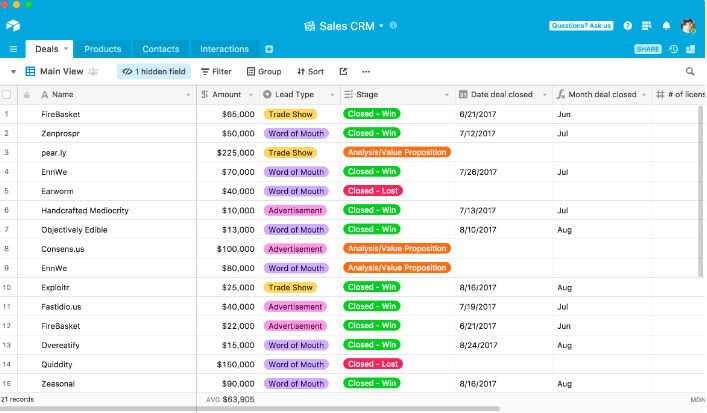
It’s a one-of-a-kind platform that allows you to easily create and manage complex relationships among data points.
With advanced filtering, customizable views, and collaboration features, it’s well-suited for a variety of purposes, such as inventory tracking and project management.
Not just that. Airtable goes above and beyond by providing more useful features such as diverse field types, spreadsheet templates, and third-party integrations.
There is no limit to the types of applications you can build with Airtable. It lets you save any kind of data, link tables for cross-referencing, personalize how the information is viewed, and even automate tasks for better data management.
When needed, it can also be turned into a Kanban board or a calendar. All these features make it the ultimate solution to increase your productivity.
What is Google Sheets?
Google Sheets gives you most of the abilities of a spreadsheet like Microsoft Excel. What makes it different from a typical spreadsheet is the added advantage of being hosted on the cloud.
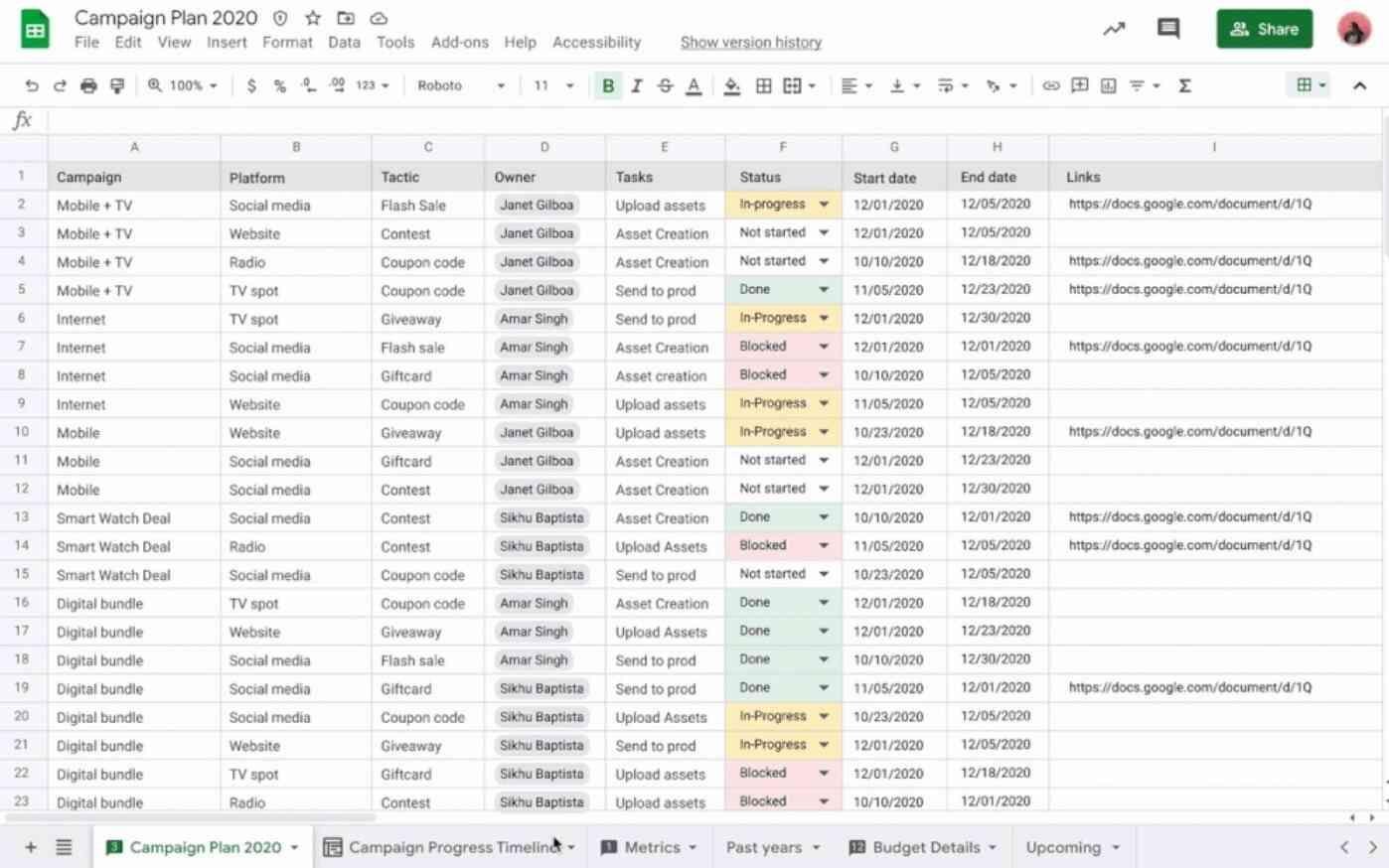
It’s available online and can be accessed from anywhere as long as you have an internet connection.
Plus, multiple users can collaborate on editing the sheet at the same time. So it’s well-suited for fundamental activities such as basic calculations and data gathering.
With features such as formula suggestions and Autofill, Google Sheets makes it easy for you to analyze data and crunch numbers without any errors.
And since it comes from Google, you have the benefit of seamless integration with other Google products like Google Forms, Google Docs, and Google Slides.
Airtable key features
What makes Airtable stand out as the favorite platform for many users and businesses? To answer this question, let’s explore its core features.
Multiple project views
Airtable comes with eight task views, letting you instantly change the way your data is shown. For example, the List view gives you a neat and detailed image of your workflow.
If you want to understand how different components of your process work together, you have the Timeline view. It’s great for monitoring events, projects, and resources.
Another option is the Kanban View, which lets you track stakeholders, progress, and deliverables in an intuitive way. It shows your tasks as cards, which you can move around based on the level of their progress.
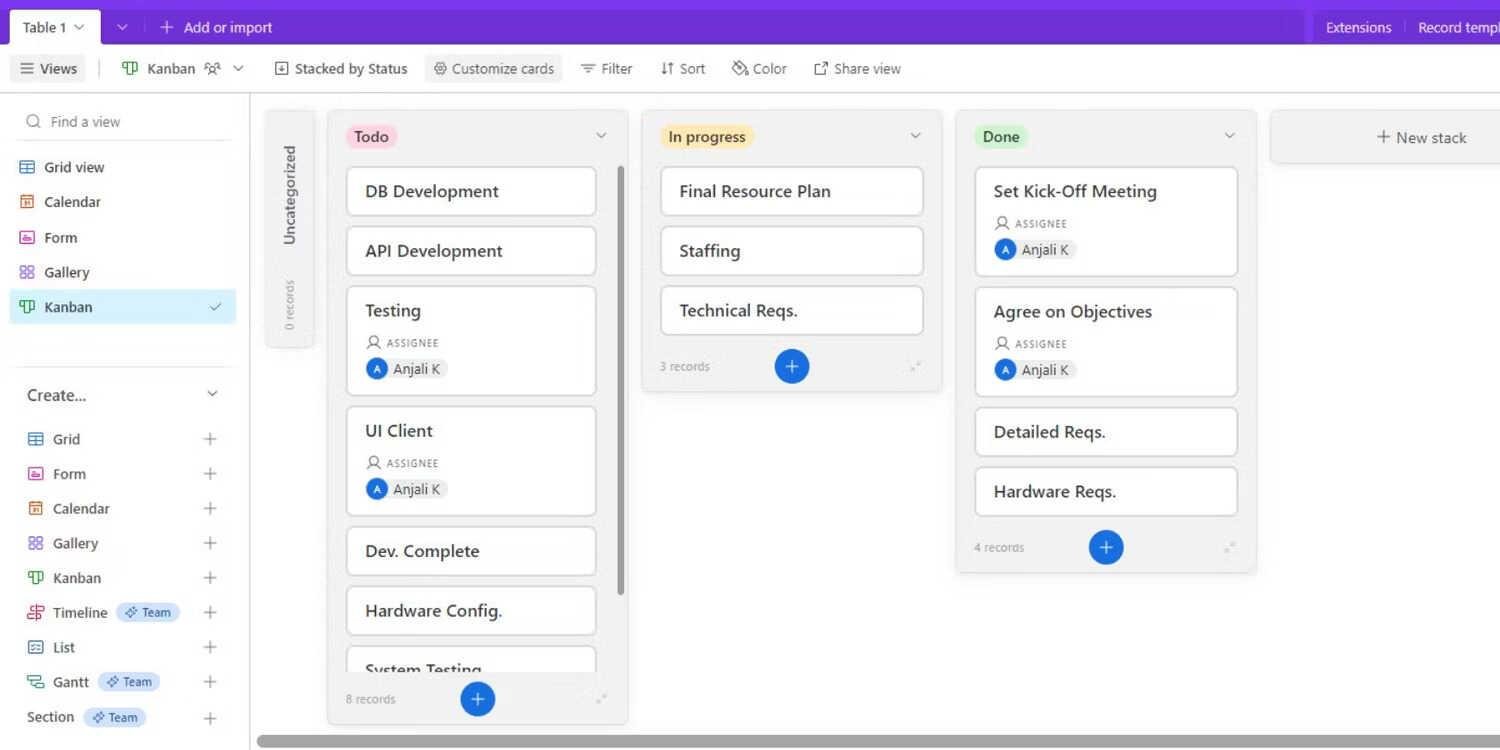
Then, there’s the Gantt View to help you keep tabs on deadlines and processes. It helps you map out milestones, activities, and task dependencies. So you can manage multi-step projects with ease.
App development
Airtable lets you build apps that use your data without coding. You have the option to build an app from scratch or use one of the app templates to get started fast.
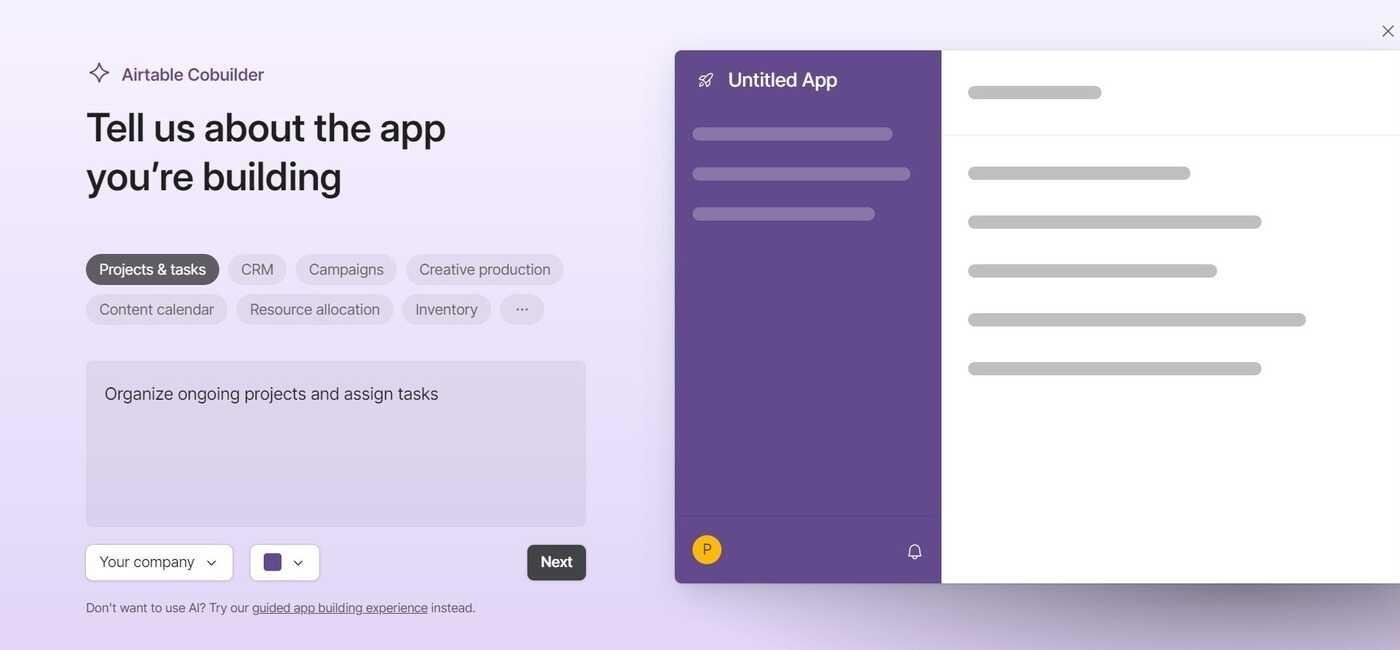
Airtable’s Interface Designer makes it easy to craft applications, even for those with little technical know-how. You can design customized interfaces by dragging and dropping the components that you require.
But you probably won’t need to start from scratch, as the pre-made templates already cover most of the common use cases, such as project tracking, product launch, and event planning.
File sharing and integrations
Airtable offers seamless data and file sharing. Whether you use Android or iOS, and desktop or mobile, you can access your files from anywhere with an internet connection.
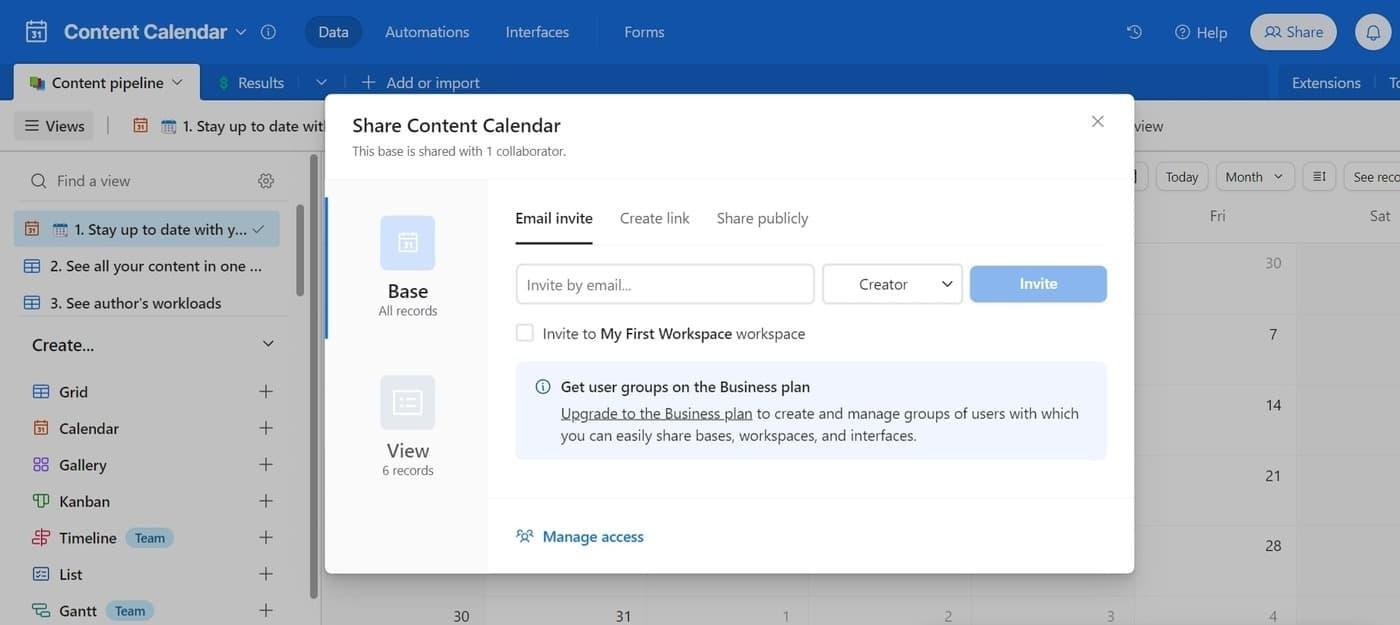
Plus, there are many ways to share your files and projects with others. You can:
- Insert your Airtable base in your website
- Create shareable links with custom permissions
- Make use of your base’s API key to modify your app
If you want to make your current workflow even more efficient, Airtable offers seamless integrations with other apps via Blocks. These include Integromat, Workato, Automate.io, and Zapier.
Google Sheets key features
So why is Google Sheets one of the most successful cloud applications of all time? Let’s take a look at its best features.
Collaborative and convenient editing
Before Google Sheets, if you wanted to collaborate on a spreadsheet with others, your options were limited and inefficient. You had to create the spreadsheet and email it to the people you wanted to review it.
But Google Sheets changed all that. Now, multiple users can view and edit your spreadsheet at the same time. There are also other features to help teams collaborate, such as built-in chat, comments, and version history.

Besides that, the platform also provides you with the convenience of offline editing. To use it on desktop, you’ll need the Google Docs Offline Chrome extension. And if you want to edit on the go, you’ll need to install the Google Sheets mobile app.
Autofill data
The Autofill feature goes a long way in simplifying the data entry process. If your data follows a specific pattern or consists of values you’ve already filled before, you can fill cells with it automatically.
For example, if you have a list of months in a year (January, February, etc.), you don’t have to enter each month manually. You can input the first two manually and autofill the remaining.
The same logic can be used for other types of data, such as weekdays, numbered lists, and calculation formulas.
Airtable vs Google Sheets compared
When comparing Google Sheets and Airtable, you’ll find they cater to different needs.
Google Sheets excels in its simplicity and familiar spreadsheet interface, making it great for managing data, performing calculations, and creating charts. For example, you can easily create pivot tables to analyze sales data.
Airtable, on the other hand, combines spreadsheet functionality with database features. It allows you to link records across tables, categorize data with views, and use rich field types like attachments and checkboxes.
For instance, if you’re managing a content calendar, Airtable lets you attach files, set deadlines, and view tasks on a Kanban board.
While Google Sheets is perfect for straightforward data tasks, Airtable’s advanced features make it ideal for complex project management and relational databases. Your choice depends on whether you need a basic spreadsheet or a powerful tool for organizing more intricate workflows.
Project management
Google Sheets is ideal if you prefer simplicity and familiarity. You can create task lists, track progress, and even use formulas to calculate deadlines.
For example, you might set up a project timeline using a Gantt chart template to visualize tasks and deadlines.
Airtable, however, offers more advanced project management features. You can organize tasks into tables, link related tasks, and switch between different views like grids, calendars, and Kanban boards.
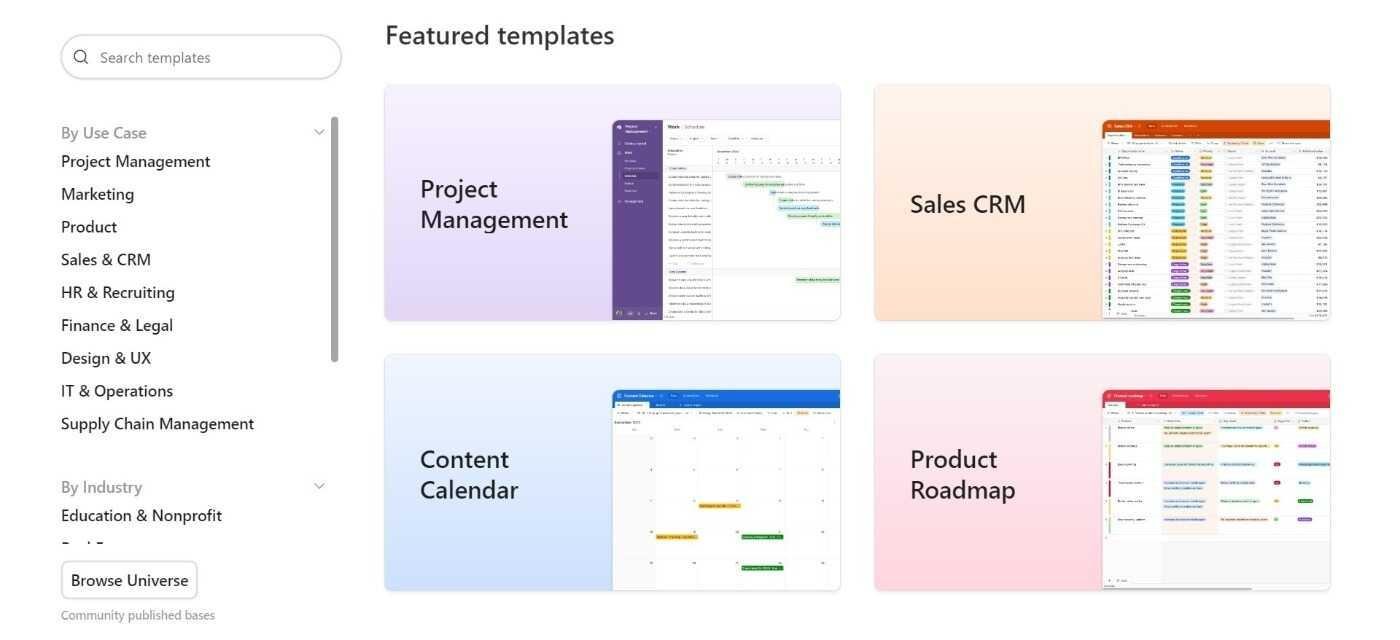
If you’re managing a marketing campaign, Airtable lets you track content production, assign tasks, and view everything in a calendar or Kanban board, giving you flexibility in how you manage your projects.
Google Sheets works well for straightforward project tracking, but Airtable’s versatility and ability to handle complex projects make it a better choice for more dynamic and collaborative work environments.
Team collaboration
Google Sheets is excellent for real-time collaboration on data. Multiple users can edit the same sheet simultaneously, with changes instantly visible to everyone.
For example, if your team is working on a budget, each member can update their section, and everyone sees the updates in real-time.
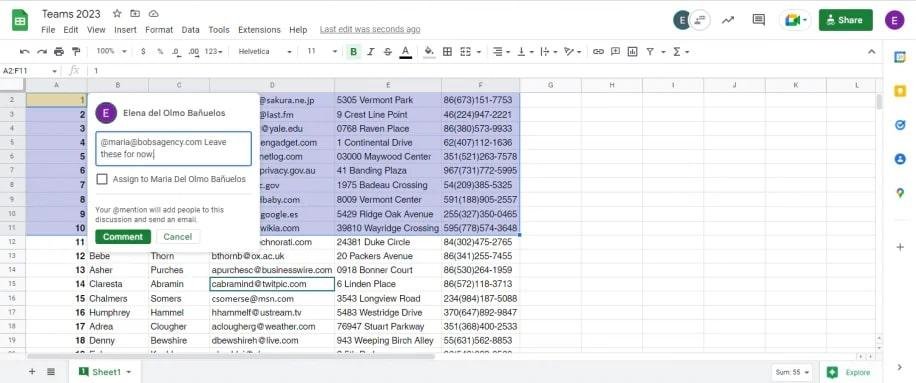
Airtable, however, offers more dynamic collaboration features. You can create different views for team members, such as a grid for data entry or a calendar for deadlines.
Airtable also allows you to add comments directly to records, tag team members, and attach files. For instance, in a product development project, your team can manage tasks, track progress, and communicate within Airtable without needing separate tools.
While Google Sheets is great for straightforward collaboration, Airtable’s flexibility and robust communication features make it ideal for teams handling complex, multifaceted projects.
Database management
Google Sheets lets you create, edit, and collaborate on spreadsheets online. It has the most important capabilities you need for managing data, such as data entry, data visualization, and formulas.
Airtable, on the other hand, combines the features of a spreadsheet and a database. This makes it ideal for versatile scenarios, such as inventory tracking, project management, and event planning.
Unlike Google Sheets, Airtable has the ability to manage and organize large volumes of data, along with presenting it in different ways like Grid, Calendar, and Kanban.
With Airtable, you can fully utilize the power of relational databases to handle complex data relationships.
Besides that, the views, filters, groups, and other features of Airtable are much more robust than those of Google Sheets.
But that doesn’t mean Airtable lets you do everything a spreadsheet tool does. For example, you can’t bold out sections, use color coding, or apply formulas in Airtable as easily as you can do in Google Sheets.
So it’s hard to pick a winner in terms of this aspect. Airtable is great as a spreadsheet database hybrid. But if you want typical spreadsheet features, Google Sheets comes out on top.
Over to you: Google Sheets vs Airtable
In deciding between Google Sheets and Airtable, consider your specific needs and the complexity of your projects. Google Sheets is an excellent choice if you value simplicity, familiarity, and straightforward data management.
It’s great for tasks like budgeting, simple databases, and real-time collaboration, where a basic spreadsheet format suffices.
On the other hand, if you need a tool that goes beyond simple data management, Airtable offers more advanced features.
With its ability to handle relational databases, customizable views, and rich field types, Airtable excels in managing complex projects, organizing data visually, and fostering team collaboration.
Ultimately, your decision should be based on whether you need the basic functionality of Google Sheets or the powerful versatility of Airtable. If your projects involve more dynamic data and require a flexible, user-friendly interface, Airtable may be the better fit for your workflow.
Did I miss anything? Did you try these tools? Do you have any questions or comments? Share your thoughts below in the comments section.




